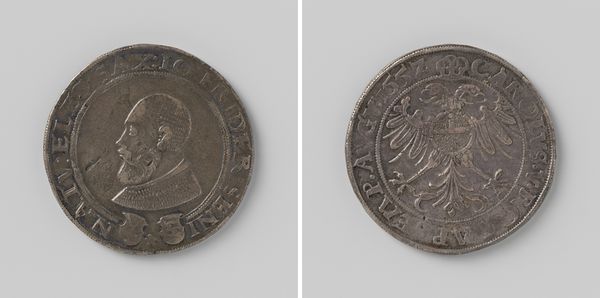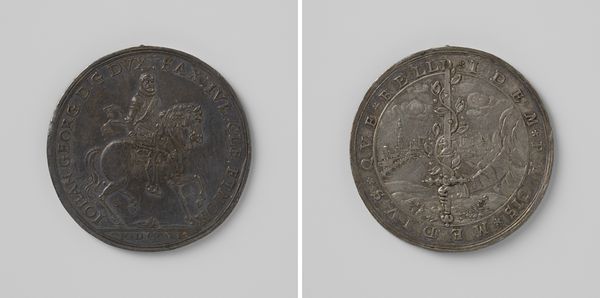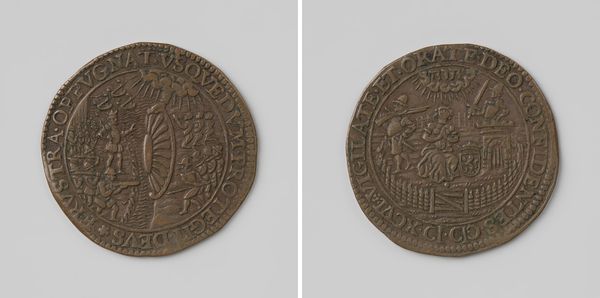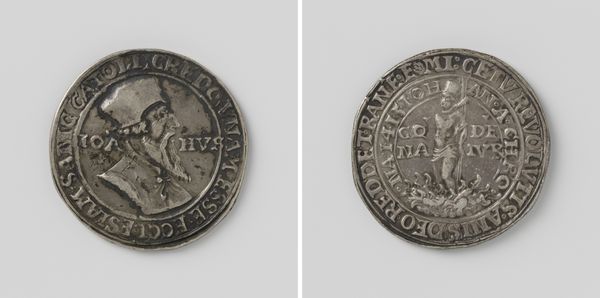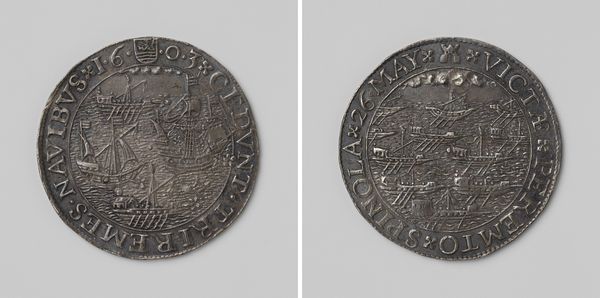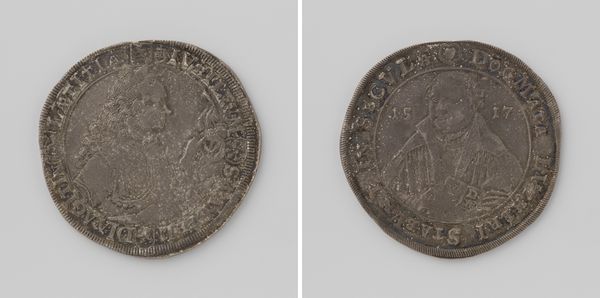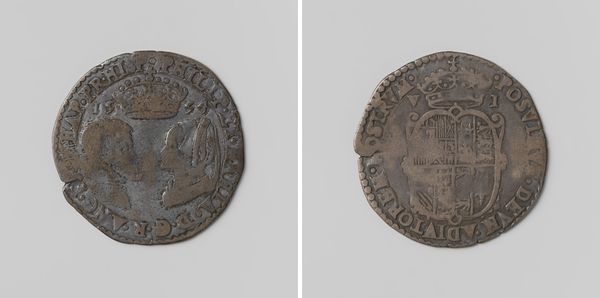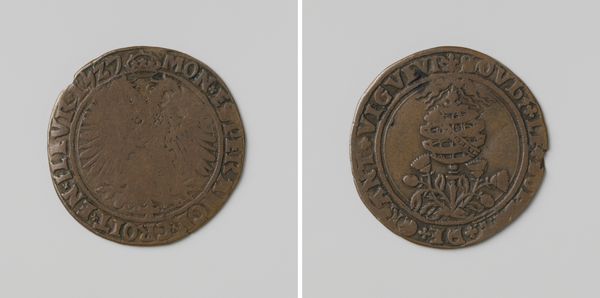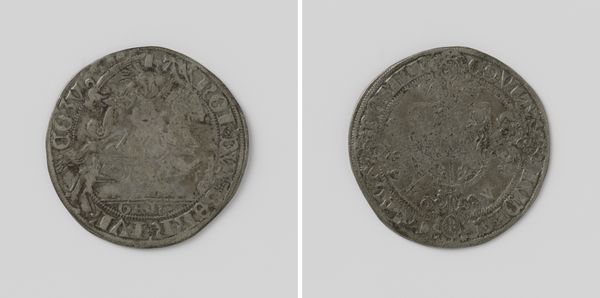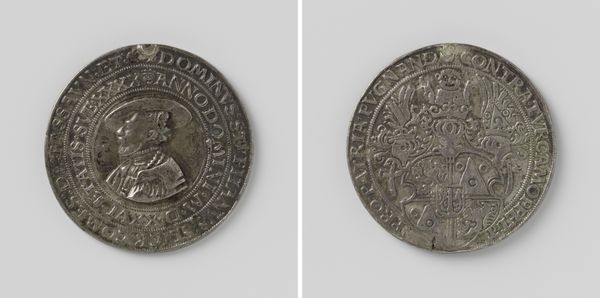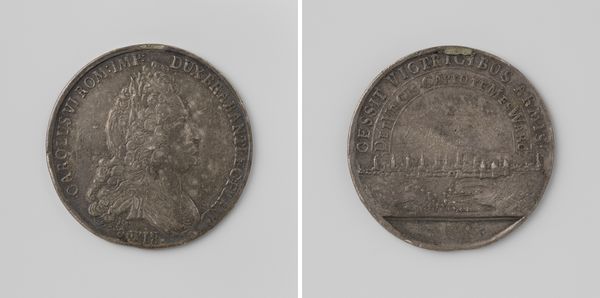
metal, relief, sculpture, engraving
#
portrait
#
medieval
#
metal
#
relief
#
sculptural image
#
sculpture
#
history-painting
#
engraving
Dimensions: diameter 4.4 cm, weight 294 gr
Copyright: Rijks Museum: Open Domain
Curator: Here we have a striking example of 17th-century commemorative art: "Eerste eeuwfeest van de Reformatie door Martin Luther," dating to 1617, created by Heinrich von Rehnen. Editor: My initial impression is how small it appears. It almost feels like a coin, dense with symbolism despite its scale. Curator: That's precisely it; it's a medal. The work is crafted from metal, a relief engraving meant to be held, traded, and commemorate a key historical anniversary. Consider the implications of its material—durable, potentially precious, carrying the weight of historical importance. Editor: Right, the choice of metal itself makes it a statement about permanence. It also gives a fascinating look into the technologies involved, where an artisan had the skill and workshop space needed for metal casting and engraving. These pieces of labor come together to make this image possible. It tells us a lot about workshops and artistic production in this specific area, where they were clearly invested in celebrating this historical moment. Curator: Indeed. The medal commemorates the centennial of the Reformation, featuring key figures involved, with Luther undoubtedly prominent. The socio-political forces at play in the aftermath of the Reformation shaped the demand and creation of such objects. Disseminating visual imagery allowed for widespread memorialization. Editor: What I find compelling is how this medal moves between craft and fine art. It functions almost as propaganda, something to be possessed and displayed—a portable monument reinforcing social and religious identity. This piece prompts questions: who was Rehnen? Were they aligned with certain patronage, religious convictions, or market interests that shaped their production choices? Curator: These medals played a role in shaping public perception of the Reformation. It solidified historical memory and contributed to the cultural and political landscape of the time. Examining the circumstances around its creation—commission, intended audience, means of distribution—all help illuminate its impact. Editor: I agree. For me, examining these historical forces in the context of artistic processes involved emphasizes how intertwined these aspects were during this pivotal moment of cultural shift. The very act of memorializing became enmeshed with these artistic and labor systems of the time. Curator: Precisely. Thinking about what materials were at Rehnens disposal, their studio conditions, and broader artistic context are crucial to appreciating its creation and appreciating the art's position within this history.
Comments
No comments
Be the first to comment and join the conversation on the ultimate creative platform.

